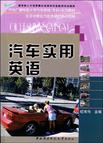汽车实用英语
2008-10
中央广播电视大学出版
纪常伟
182
随着我国经济持续快速平稳发展,工业化、信息化水平不断提高,产业结构进一步升级优化,不仅需要一大批科技创新人才,而且需要数以千万计的技能型人才和高素质的劳动者队伍。目前,我国已经出现了技能型人才短缺的现象,一方面,企业现有技术人员不能满足产业升级和技术进步的需要,另一方面,技能型人才的教育培养滞后于市场需求。这种现象已经引起各级领导和社会各界广泛关注。就汽车维修行业而言,技能型人才短缺现象更为突出。据调查,随着汽车保有量的大幅度上升,全国汽车维修行业每年需要新增近30万从业人员。为此,教育主管部门和相关行业主管部门提出和实施了“制造业和现代服务业技能型紧缺人才培养培训工程”,旨在整合教育和行业资源,加大投入力度,改革教育培养模式,创新教学和培训方法,培养一大批适应我国经济建设需要、人才市场紧缺的技能型人才。 中央广播电视大学是面向全国开展现代远程教育的开放大学。中央电大和44所省级电大及其所属的分校、工作站、教学点,共同组成了目前世界最大的现代远程教育教学和教学管理系统。中央电大的主要任务是为各类从业人员提供学习的机会和条件,为国家经济和社会发展培养应用型人才。我们有责任也有能力为技能型紧缺人才培养做出自己的贡献。近几年来,中央电大抓住国家大力发展现代远程教育这一有利时机,通过开展人才培养模式改革和开放教育试点项目,有效提升了办学综合实力和为社会提供教育服务的能力。截至2005年春,中央电大开放教育试点本专科累计注册学生超过200万人,毕业学生超过60万人;已构建了“天网地网结合、三级平台互动”的技术模式,建设了适应成人在职学习、学历及非学历教育相结合的课程体系;形成了资源共享、导学与自主学习相结合的教学模式和统一规范管理、分层组织实施、系统协同服务的管理模式及运行机制。
《汽车实用英语(含考核册)》内容为汽车专业英语,全书由30课汽车专业英语课文组成,前15课为发动机专业英语,主要介绍发动机结构、原理、电控等内容;后15课为汽车底盘专业英语,主要介绍轿车底盘的组成、结构以及电子技术在汽车底盘上的应用。每篇课文后面附有本篇课文内容涉及的专业词汇和短语,并根据课文内容提出若干问题供课后复习时参考。《汽车实用英语(含考核册)》可作为大学专科以及中专汽车专业英语教材或阅读材料,也可作为一般大、中学生的汽车专业英语课外阅读材料,以及汽车维修和管理人员了解国外汽车技术的参考书。
Lesson 1 The History of Automobile1. Early Steam Powered Cars2. Early Electric Cars3. The Internal Combustion Engine and Early Gas-powered Cars.4. The First Mass Producers of Cars —— The Assembly Line5. The Development of CarsLesson 2 Introduction to Automobile1. Automobile Basic Construction2. Automobile and SocietyLesson 3 Engine Fundamentals1. Main Terms2. Engine Systems3. Engine Operating Principles4. Basic TermsLesson 4 Diesel Engine1. Historic Details of the Diesel Engine2. Cycle of Operation of the Four-stroke Diesel Engine3. Diesel Fuel Supply SystemLesson 5 Two-stroke Engine1. Two-stroke SI Engine2. Two-stroke CI EngineLesson 6 Cylinder Block and Cylinder Head1. Cylinder Block2. Cylinder HeadLesson 7 Piston, Connecting Rod and Crankshaft1. The Piston2. The Connecting Rod3. The CrankshaftLesson 8 The Valve Mechanism of an Engine1. Purpose of Valves2. Operation of Valve Mechanism3. Valve4. CamshaftLesson 9 Engine Lubrication System1. Purposes of Lubrication2. Construction of Lubrication SystemLesson 10 Engine Cooling System1. Purpose of the Cooling System2. Heat Removal3. Types of Cooling SystemLesson 11 Engine Ignition System1. Conventional Ignition System2. Electronic Ignition SystemLesson 12 Engine Starting System1. Starter Motor2. Solenoid Switch3. Ignition/Starter Switch4. Cables5. BatteryLesson 13 Engine Intake and Exhaust System1. Intake System2. Exhaust SystemLesson 14 Gasoline Engine Management System (EMS)1. Introduction2. The Spark Ignition Engine3. Primary Engine Management Functions4. Cylinder Charge5. Mixture Formation6. IgnitionLesson 15 Gasoline Fuel Supply Systems1. Introduction2. Fuel Delivery SystemLesson 16 Clutch.1. General2. Design Diagrams of ClutchesLesson 17 Manual Transmission1. Introduction2. Function and ConfigurationLesson 18 Automatic Transmission1. Parts of an Automatic Transmission2. The Fluid Coupling3. How does the Planetary Gear System Work?Lesson 19 Propeller Shafts and Universal Joints1. Introduction2. Propeller Shafts3. Universal Joints4. Cross Type Joint5. Constant Velocity JointLesson 20 Final Drive,Differential and Axles1. Final Drive2. Differential3. Front-wheel Drive (FWD)Lesson 21 Suspension System1. Introduction2. Front Suspension3. Rear SuspensionLesson 22 Steering System1. Overview2. Configuration and Principle Steering GearsLesson 23 Mechanical Brake System1. Overview2. Early Brake Designs3. Automotive Brake Designs4. External Contracting-band Brakes5. Internal Expanding-band Brakes6. Internal Expanding-shoe Brakes7. Disc Brakes8. Brake System Operation9. Service BrakesLesson 24 ABS,TCS and ESP1. Introduction to Anti-lock Braking System (ABS)2. The Principle of ABS Function3. The Principle of TCS Function4. The Principle of ESP Function5. ESP Electronic Stability ProgramLesson 25 Tires and Wheels1. Introduction2. Tire Characteristics3. Asymmetric-Sre Designs4. Tire Performance5. WheelsLesson 26 Automotive Battery1. Introduction2. Conventional Batteries3. Maintenance-free BatteriesLesson 27 Lighting System1. Introduction2. Lamps3. HeadlightsLesson 28 Instrument Panel1. Introduction2. Speedometers3. Odometers4. Tachometers5. Gauges6. Instrument Voltage Regulator7. Bimetallic GaugesLesson 29 Occupant Safety Systems1. Seat Belts and Seat Belt Tighteners2. Method of Operation3. Frontal Airbag4. Side AirbagLesson 30 Air Conditioning System1. Air Circulation2. Humidity3. Cooling theAir4. Drying and Cleaning the Air5. Anti-icing6. Thermostatic Expansion Valve
5.2 Types of the Batteries Batteries can be subdivided into two major groups: primary and secondary batteries. Primarybatteries are those that are nonrechargeable. Examples of primary batteries include those used inflashlights, calculators, smoke alarms, and radios. Various metals and chemicals are used tomanufacture primary batteries. Secondary batteries are those that can be discharged and recharged repeatedly. This can be doneby reversing the normal current flow through the battery. The automobile battery is called asecondary battery because it can be charged and discharged many times. 5.3 Battery Cells Batteries are made of a number of cells put together. A battery cell is defined as that part of abattery that stores chemical energy for later use. In its simplest form, a battery consists of threecomponents. These include a positive plate (one type of metal), a negative plate (another type ofmetal), and an electrolyte solution. When these three-components, two dissimilar metals and anelectrolyte solution, are placed together, electricity can be produced. All batteries, both primary and secondary batteries, have cells. The difference between batterycells is the type of metals and electrolyte chemicals used in the cells. ……
